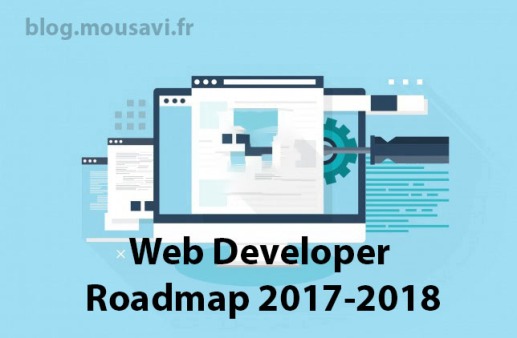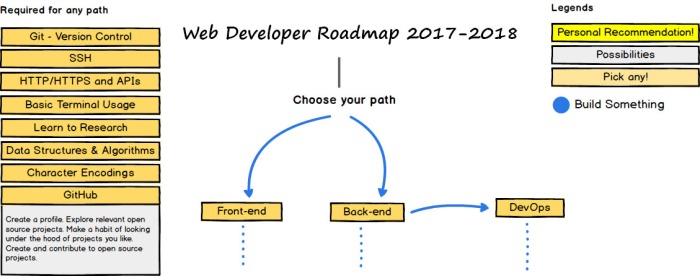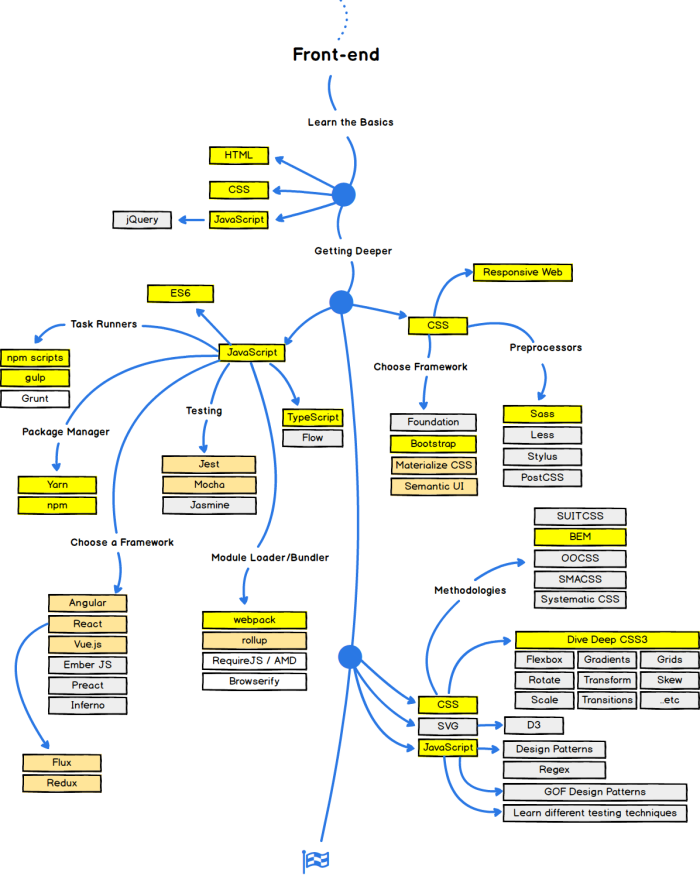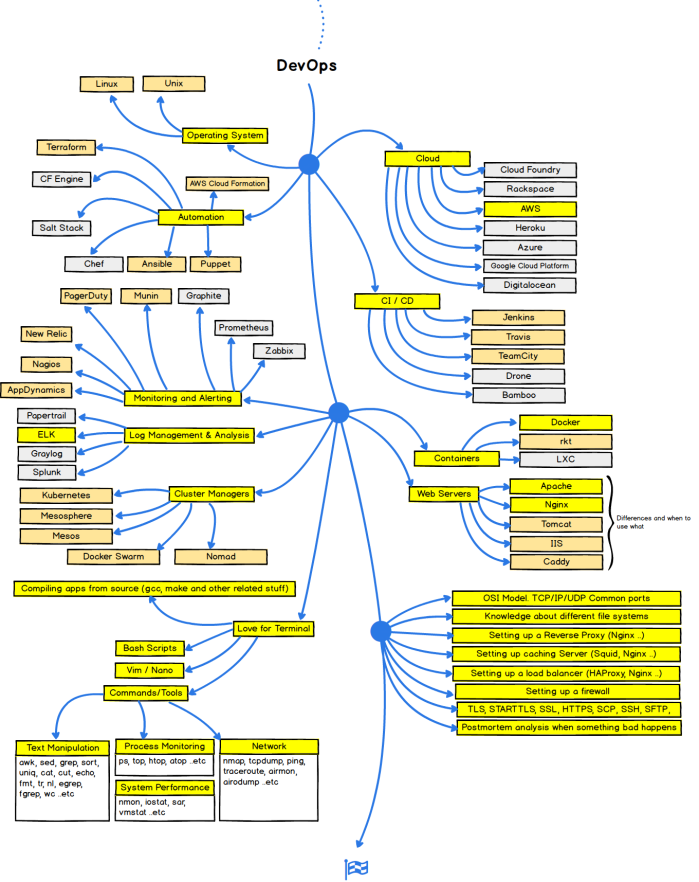Hesam Seyed Mousavi, November 30, 2017

Source: br-instructor
Full-Stack Web Developer
A Full-Stack Web Developer is someone who is able to work on both the front-end and back-end portions of an application. Front-end generally refers to the portion of an application the user will see or interact with, and the back-end is the part of the application that handles the logic, database interactions, user authentication, server configuration, etc. Being a Full-Stack Developer doesn’t mean that you have necessarily mastered everything required to work with the front-end or back-end, but it means that you are able to work on both sides and understand what is going on when building an application.
HTML/CSS
Almost every single program, whether online or in-person, that is teaching you how to be a web developer will start with HTML and CSS because they are the building blocks of the web. Simply put, HTML allows you to add content to a website and CSS is what allows you to style your content. The following topics related to HTML/CSS come up often in interviews and on the actual job when you’re working:
- Semantic HTML.
- Be able to explain the CSS Box Model.
- Benefits of CSS preprocessors (you don’t necessarily need to understand how to use one on a deep level, but you should to understand what they are for and how they help with development).
- CSS Media Queries to target different devices and write responsive CSS.
- Bootstrap (a framework for helping design and layout content on a page and while many online programs or schools focus heavily on teaching Bootstrap, in reality it’s more important to have a deep knowledge of fundamental CSS than specific Bootstrap features and methods).
If you want to become a Full-Stack Web Developer in 2017 and land your first job, below is a reference guide with a list of things you should learn.
JavaScript
The JavaScript language is growing more popular every year and new libraries, frameworks, and tools are constantly being released. Based on the Stack Overflow 2016 Developer Survey, JavaScript is the most popular language in both Full-Stack, Front-end, and Back-end Development. It’s the only language that runs natively in the browser, and can double up as a server-side language as well (as you’ll see below with Node.js). Below are some topics you need to understand as a Full-Stack Developer:
- Understand how to work with the DOM. Also know what JSON is and how to manipulate it.
- Important language features such as functional composition, prototypal inheritance, closures, event delegation, scope, higher-order functions.
- Asynchronous control flow, promises, and callbacks.
- Learn how to properly structure your code and modularize parts of it, things like webpack, browserify, or build tools like gulp will definitely be helpful to know.
- Know how to use at least one popular framework (many programs will focus heavily on teaching you a library or framework like React or AngularJS, but in reality it’s much more important to have a deep understanding of the JavaScript language and not focus so much on framework-specific features. Once you have a good understanding of JavaScript, picking up a framework that sits on top of it won’t be too hard anyway).
- Although some may argue that you should be using this less or that it’s slowly dying, jQuery code still exists in most applications and a solid understanding of it will be helpful.
- Some knowledge on testing frameworks and why they’re important (some may even claim that this topic should be optional).
- Learn about some important new ES6 features (optional).
Back-End Language
Once you feel you’ve gotten a good grasp on HTML/CSS and JavaScript, you’ll want to move on to a back-end language that will handle things like database operations, user authentication, and application logic. All online programs and bootcamps usually focus on a specific back-end language, and in reality in doesn’t matter which one you learn so much as long as you understand what is going on and you learn the nuances of your chosen language. You’ll get a ton of different responses if you ask someone which back-end language is the best to learn, so below I’ve listed a few popular combinations. An important note: whichever you decide to learn, just stick with it and learn as much as you can about it — there are jobs out there for all the languages listed below.
- Node.js: This is a great option because Node.js is itself just a JavaScript environment which means you don’t need to learn a new language. This is a big reason why a lot of online programs and bootcamps choose to teach Node.js. The most popular framework you’d most likely learn to aid you in developing web applications is Express.
- Ruby: Some popular frameworks for developing in Ruby are Rails and Sinatra. Plenty of programs teach Ruby as a first back-end language.
- Python: Some popular frameworks for developing in Python are Django and Flask.
- Java: The Java language isn’t taught so much these days when it comes to Full-Stack Web Development, but some companies do use Java as their back-end and it is still a very in-demand language (see image above).
- PHP: PHP is rarely taught in programs these days, but just like with Java, it is still very in-demand and it is a cornerstone of the web today.
Databases & Web Storage
When learning to build web applications, at some point you’ll probably want to store data somewhere and then access it later. You should have a good grasp on the following topics related to databases and storage.
- Understand the benefits of relational data, e.g. SQL.
- Learn about NoSQL databases, e.g. MongoDB.
- Understand which would be better in certain situations.
- Know how to connect a database with your chosen back-end language (e.g. Node.js + MongoDB).
- Understand the benefits of in-memory data stores like Redis or memcached.
- Web storage to store sessions, cookies, and cached data in the browser.
- Scaling databases, ACID, and ORM (all optional).
HTTP & REST
HTTP is a stateless application protocol on the Internet — it’s what allows clients to communicate with servers (e.g. your JavaScript code can make an AJAX request to some back-end code you have running on a server which will happen via HTTP). Some important topics you should learn about are listed below:
- What is REST and why is it important in regards to the HTTP protocol and web applications.
- Best practices for designing a RESTful API. POST/GET requests.
- Learning how to use Chrome DevTools can be extremely helpful.
- What are SSL Certificates.
- HTTP/2 & SPDY (optional).
- WebSockets, Web Workers, and Service Workers (all optional).
Web Application Architecture
Once you think you have a grasp on HTML/CSS, JavaScript, back-end programming, databases, and HTTP/REST, then comes the tricky part. At this point if you want to create a somewhat complex web application, you’ll need to know how to structure your code, how to separate your files, where to host your large media files, how to structure the data in your database, where to perform certain computational tasks (client-side vs server-side), and much more.
There are best practices that you can read about online on, but the best way to actually learn about application architecture is by working on a large application yourself that contains several moving parts — or even better, working on a team and together developing a somewhat large/complex application.
This is why, for example, someone with 7+ years of experience may not necessarily know CSS or JavaScript better than someone with 2 years of experience, but over all of those years they’ve presumably worked with all sorts of different applications and websites and have learned how to architect and design applications (among learning other important things) to be most efficient and can see the “big picture” when it comes to development. Below are some things you can read that will help you learn how to architect your web applications efficiently:
- Learn about common platforms as a service, e.g. Heroku and AWS. Heroku allows you to easily upload your code and have an application up and running with very little configuration or server maintenance and AWS offers dozens of products and services to help with storage, video processing, load balancing, and much more.
- Performance optimization for applications and modern browsers.
- Some opinions on what a web application architecture should include.
- Designing Web Applications by Microsoft.
- MVC.
- Most importantly though you should try to work on projects with people, look at codebases of popular projects on GitHub, and learn as much as you can from senior developers.
Git
Git is a version control system that allows developers working on a team to keep track of all the changes being made to a codebase. It’s important to know a few important things related to Git so that you understand how to properly get the latest code that you’ve missed, update parts of the code, make fixes, and change other people’s code without breaking things. You should definitely learn the concept behind Git and play around with it yourself.
- Here’s a reference list of some common git commands you’ll likely use.
- Here’s a tutorial on using Git and GitHub for beginners.
Roadmap
Below you find a set of charts demonstrating the paths that you can take and the technologies that you would want to adopt in order to become a frontend, backend or a devops. I made these charts for an old professor of mine who wanted something to share with his college students to give them a perspective.
Introduction

Front-end Roadmap

Back-end Roadmap

DevOps Roadmap

Source: br-instructor

